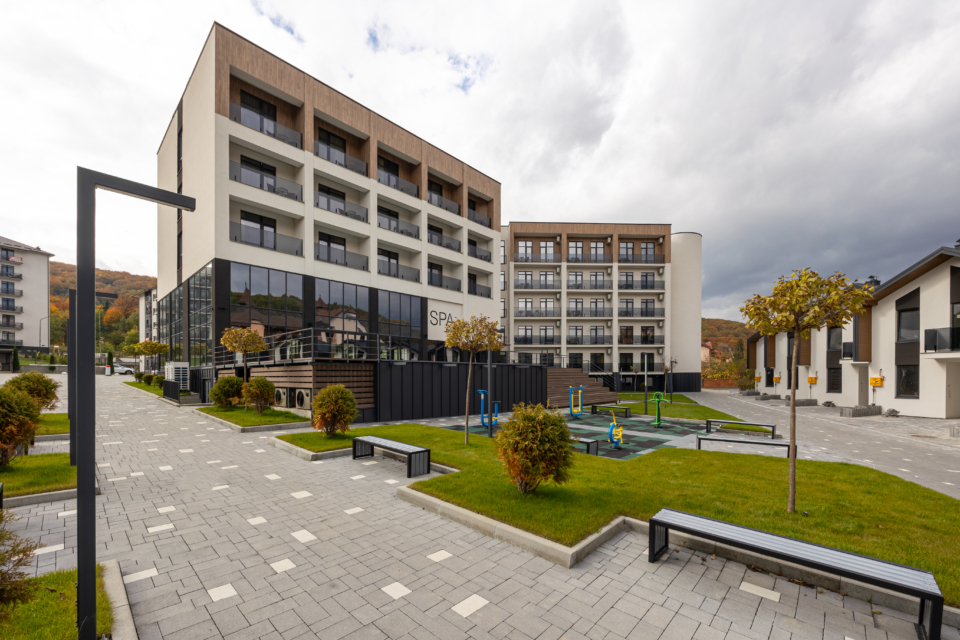Restaurant business 2025: the main trends that will change the industry

Author: Andriy Magaletskyi, Managing Partner of Restetika, President of the Culinary Association of Ukraine, organiser of charity dinners
The restaurant industry continues to develop dynamically, and this year promises to be a year of great opportunities for those who are ready for change. New technologies, growing interest in local products, popularisation of ethnic cuisine and personalised service open new horizons for restaurateurs. Learn how global trends will affect the restaurant market and how to make them your advantage.
- Staff shortage and automation
One of the key challenges for the restaurant business remains the lack of qualified staff. In Ukraine, this problem is particularly acute due to the low level of prestige of professions in the HoReCa sector, forced migration of both line workers and top managers abroad. In addition, mobilisation has caused it (one can cite thousands of examples of HoReCa workers fighting and hundreds who, unfortunately, have already died as a result of Russian aggression).
To compensate for staff shortages, restaurants are increasingly introducing automated solutions:
- Online menus and digital orders – reducing the burden on staff thanks to QR codes and mobile applications.
- Robotic systems – developing technologies like robotic bartenders or automated kitchen stations that reduce payroll costs.
- Use of AI technologies, which allows closing some of the operational tasks that were performed by employees (developing layouts, editing videos, writing briefs, standards, instructions, etc.).
- Farm-to-table: focus on local products
The trend towards the use of local, organic products is becoming a defining feature of modern gastronomy. In Ukraine, as well as in the world, the popularity of farm-to-table restaurants is growing – that is, they use ingredients grown in the region, directly from suppliers or even from their own farms.
This trend is beneficial to restaurants for several reasons:
- Unique flavour – locally grown produce has unique flavour characteristics, giving dishes an authentic feel.
- Environmentally friendly – the carbon footprint is reduced as products do not need to be transported long distances.
- Cost reduction – especially for establishments that can grow some of the ingredients themselves.
- Creating a local gastro-brand and a local gastro-magnet for tourists and locals.
- Plant-based foods and artificial meats, lactose-free desserts
The demand for plant-based foods and alternative protein sources is growing at a record pace. More and more consumers are switching to vegetarian and vegan diets, not only because of health issues, but especially for ethical and environmental reasons.
In response to this:
- Vegan alternatives to traditional dishes are appearing on restaurant menus.
- Artificial meat technologies are developing, including products grown in labs or printed on 3D printers.
- Fish and dairy substitutes – plant-based analogues of cheese, yoghurt and even seafood – are becoming popular.
- A return to traditional cooking methods
While technological advances are changing the restaurant industry, there is also a growing interest in traditional cooking methods. In 2025, especially popular are:
- Open fire cooking – chargrills, hospers, tandoor grills, in which meat, fish and vegetables are cooked, are gaining popularity because of the distinctive flavour and aroma of the smoke.
- Fermentation is a return to natural methods of preservation, which add unique flavours and preserve the beneficial properties of products. By the way, in Ukraine fermentation is a traditional way of cooking certain dishes since the Middle Ages.
- Author’s cuisine – a concept emphasising chefs’ unique recipes and original serves.
Popularising Southeast Asian cuisines
World gastronomy is actively turning to pan-Asian traditions. After the pandemic, many people are rediscovering Thai, Vietnamese, Japanese and Indonesian cuisines. The popularity is due to:
- A unique combination of flavours (spiciness, sourness, sweetness, umami).
- The use of healthy ingredients – seafood, coconut milk, seaweed, spices.
- Minimal heat treatment of products, which preserves their benefits.
- Restaurant as a space for emotions
If earlier in Europe visiting a restaurant was primarily about food, now this trend is shifting to emotional experience (the rule ‘people demand bread and spectacles’ still works) – and in this Ukraine is far ahead of the restaurant markets of Europe and America.
For many Ukrainians a restaurant is a place:
- A form of cultural recreation (socialising with friends, literary evenings, stand-up);
- An opportunity to get new gastro-experiments (wine tastings, cheese tastings, gastro-dinners);
- An opportunity to find a romantic partner/cousin.
- Watching football matches.
- Celebrating events and relieving stress.
Eateries are increasingly focusing on atmosphere, service and entertainment, combining gastronomy with show programmes, live music, interactive events.
Changing restaurant formats
The modern restaurant business is changing rapidly, and classic formats are partly giving way to new concepts that better meet consumer demands and economic realities. Among the popular restaurant formats in 2025:
- Food halls – combining several different cuisines in one space.
- Dark kitchens – kitchens that operate solely on delivery, with no physical dining rooms for diners.
- Pop-up restaurants – temporary establishments that open for a limited time;
- Street Food – concepts about speed, limited menus and limited service.
The change in restaurant formats is driven not only by economic factors, but also by the evolution of gastronomic habits of guests, especially Generation Z i Alpha. Modern consumers value convenience, speed and variety, which is forcing restaurateurs to rethink traditional business models and introduce more flexible solutions.
- Leveraging Artificial Intelligence (AI) and Analytics
Artificial intelligence and big data are playing an increasingly important role in the growth of the restaurant business, helping to optimise operational processes, reduce costs and improve customer experience. In 2025, innovative technologies are becoming not just an advantage, but a necessity for the competitiveness of establishments
- Data analysis and forecasting. AI helps analyse demand for dishes, identify the most cost-effective menu items and find opportunities to reduce costs. Such technologies allow restaurants to reduce procurement costs and food waste.
- Menu customisation. Using artificial intelligence, restaurants can create personalised menus that take into account global gastronomic trends, seasonality and guest preferences. This will help both improve the customer experience and increase the average cheque through precise targeting of offerings.
- Marketing and communication automation. AI is being used to create advertising campaigns, run social media and communicate with customers. For example, the system can analyse guest feedback and automatically respond to negative comments or offer special offers to those who have left positive feedback.
The restaurant business in 2025 is a veritable marathon of change. Staff shortage, rapid development of technologies and new tastes of guests, growing operating costs make restaurants look for new solutions for development. In Ukraine, this year will be the year of automation, emphasis on local products, popularity of ethnic cuisines and creation of restaurants that give not only delicious food, but also emotions.
Those who have time to adapt, innovate and make visiting an establishment a special experience will gain a competitive advantage. Success now depends not only on the cuisine, but also on the atmosphere, technology and the ability of restaurants to adapt to the expectations of modern guests.
Subscribe to our blog!
















